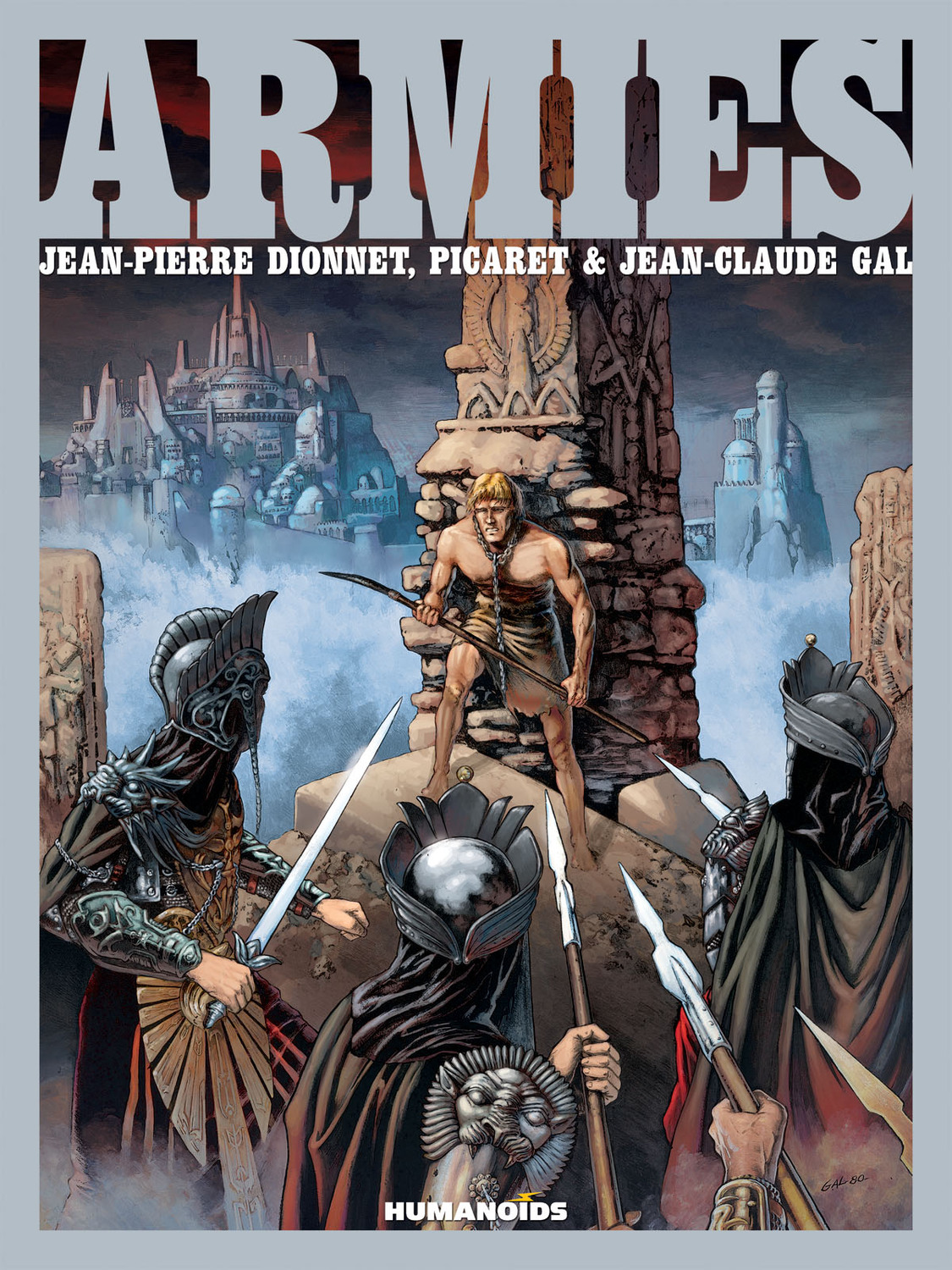
Title: Armies
Words: Jean-Pierre Dionnet, Picaret
Art: Jean-Claude Gal
Publisher: Humanoids
Review by John Anderson
This is classic heavy metal. These stories about medieval armies, bloody battles, sprawling empires and ancient ruins originally appeared in Métal Hurlant, starting with the first issue in 1974. Most of them are written by Dionnet, one of the founders of that magazine, and beautifully illustrated by the visionary artist Gal.
There are two parts to this book. The first, Conquering Armies, is a series of short stories ostensibly about a mighty unstoppable army. But the stories focus on the common soldiers furing the times in the army is stalled between battles. My favourite story is just four pages long and concerns a soldier who has been ordered to guard the army’s back. But this is just a tactic to winnow the ranks: the army can’t support all its soldiers, so some expendable soldiers are ordered to become sentries and then left to die. I also love the last story, about a soldier who sells his compatriot into slavery and which has an entertaining surprise ending.
The second part of this book is an epic about Arn, a boy who is imprisoned by the powerful empire of Atalis, and who escapes to seek revenge. I admit that I had to read this more than once in order to follow it completely; there is a lot that is not made explicit. But that might be the point. Arn raises an army and invades a city, but (as Pat Mills writes in his afterword) he achieves nothing. In the end, the empires have crumbled to dust and nothing is remembered of them. So do the details really matter?
These stories were originally in black and white, and now they’re in colour – which might annoy some purists. But on the other hand, these coloured versions look great. The colours are muted and don’t seem to obscure the original lines. Gal’s art is incredible. In the introduction, Dionnet talks about Gal’s interest in Native American culture, and how he spent time with the Navajo and Hopi. This influence comes across in the desert setting, the tents of the soldiers and the design of the ruins. Gal has built a whole world, and he’s thought about every intricate detail, down to every helmet, every weapon, every stone in each crumbling ruin.
Even more impressive than the detail is the layout. Gal loves full-page spreads, crooked panels, and embedded panels, all of which he uses to great effect. There are some gorgeous two-page spreads with a few small panels showing some of the details of the big picture. One of my favourite full-page panels looks down at Arn as he climbs a high scaffold. Arn is in the foreground, while far below him are the multiple levels of the slave compound and the many slaves and workers moving about like ants. There are four pages of an army being destroyed by fire. There is a two-page spread of a cavernous underground tomb that should be the definition of fantasy comics. I was hugely impressed with Gal’s detailed world building and vision in Diosamante, and Armies is better.
Best of all, this book is an oversized hardcover. It’s great to see this seminal fantasy comic in English again and in a format worthy of its beauty.
